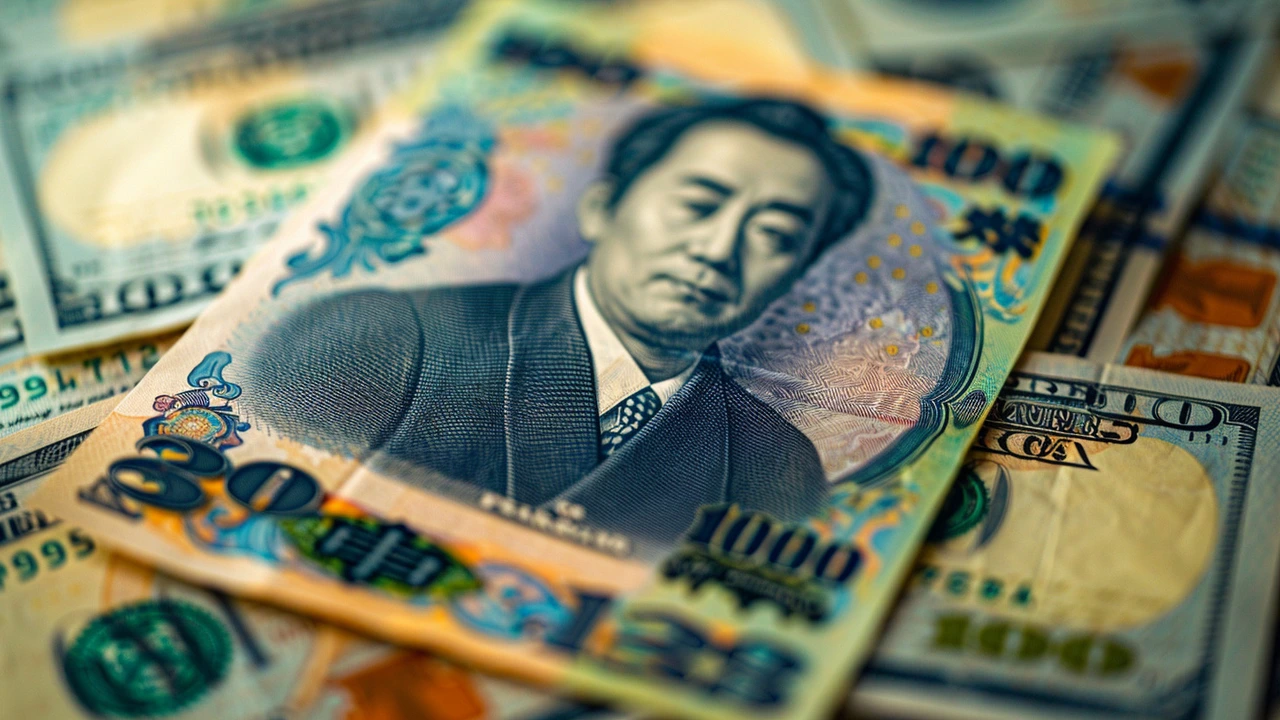Introduction
In an unexpected financial shift, the Japanese yen exhibited a tremendous surge against the U.S. dollar in the early Asian trading hours last Thursday. This sudden appreciation left traders and financial analysts pondering a potential intervention by Japanese authorities. This article delves into what led to such market speculation, the relevance of the 160 level to yen traders, and broader implications for Japan's monetary strategies.
Background of Yen's Weakness
The yen's decline has been prominently noted in the global financial markets, primarily due to stark contrasts between Japanese and U.S. interest rates. While Japan maintains its rates near zero, the U.S. has marked consistent increases, a move that naturally diminishes the yen's appeal amongst investors seeking higher returns. Consequently, cash flows have veered from yen-denominated assets toward those offering more substantial yields, pressuring the Japanese currency further. This scenario sets a concerning backdrop prompting authorities to consider intervening to stabilize their currency.
The Suspected Intervention
The notable rebound of the yen on Thursday was not just a fleeting fluctuation. Market analysts, leveraging discrepancies in the Bank of Japan's reports regarding money market projections for cash balances, suggest an intervention of a scale large enough to influence market dynamics. According to these reports, there might have been a selling of approximately 9 trillion yen ($57.96 billion), ostensibly targeting to prop up the currency. This figure, though unofficial, would represent a historic maneuver in Japan's financial interventionist strategies.
The 160 Defense Line
Among currency traders, the 160 level against the dollar is often regarded as a psychological and strategic threshold, beyond which the repercussions could be more severe for the Japanese economy. The swift action to reel in the yen's depreciation just as it approached this critical juncture indicates a probable calculated response from the Ministry of Finance. Though there has been no formal acknowledgment from Japanese financial authorities regarding this intervention, the timing and the magnitude of the currency shift align neatly with such strategic financial maneuvering.
Expert Analysis
Economic scholars like Takatoshi Ito, a distinguished academic at Columbia University and a former executive at Japan's finance ministry, see the intervention theory as plausible. The confluence of Japan maintaining low interest rates, the comparative high rates in the U.S., and the subsequent capital migration presents a convincing pretext for such governmental actions. The intervention, if confirmed, underscores a proactive rather than reactive stance on part of Japanese financial policymakers regarding the yen's valuation.
Broader Implications
The possible ramifications of such an intervention extend beyond short-term market adjustments. They may influence international financial relations, affect export competitiveness, and modify investor behavior globally. Moreover, a continued strategy of intervention can bear significant implications for Japan's financial sovereignty and the global perception of the yen as a stable and reliable currency.
Conclusion
While suspicions of Japanese authorities' market intervention to stabilize the yen gain traction, the broader strategic contours of such a move remain a subject of robust financial discourse. As global economic environments evolve and interest rate disparities heighten, the strategies employed by national authorities to maintain economic stability and currency competitiveness will be critical. For Japan, how it navigates these tumultuous financial waters with the yen could define its economic resilience in the coming years.






Write a comment